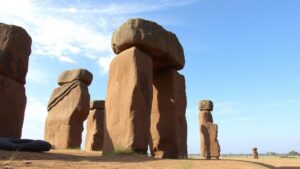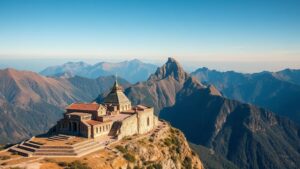Discovering the legendary stone trees of Madagascar’s Tsingy de Bemaraha.
Discovering the Legendary Stone Trees of Madagascar’s Tsingy de Bemaraha
The Tsingy de Bemaraha National Park, located in the Melaky Region of Madagascar, is a UNESCO World Heritage Site recognized for its unique geological formations, often referred to as stone trees. These limestone formations rise dramatically from the earth, creating a breathtaking landscape that draws adventurers and researchers alike. This article delves into the remarkable features of the Tsingy de Bemaraha, its significance, and why it is a must-visit destination.
The Geology of Tsingy de Bemaraha
The legend of the stone trees originates from the parks stunning rock formations, which were shaped over millions of years through a process known as karstification. The Tsingy, which means to walk on tiptoes in the local Malagasy language, describes the sharp, towering limestone pinnacles that can reach heights of up to 70 meters (approximately 230 feet).
- The formation of the Tsingy began approximately 200 million years ago from coral reefs submerged in tropical seas.
- Over time, tectonic movements lifted these reefs above sea level, and they were subsequently sculpted by rainwater, creating the intricate spires we see today.
Biodiversity and Ecosystem
The Tsingy de Bemaraha is not only famous for its stunning geological features but also for its rich biodiversity. park is home to numerous species of flora and fauna that are endemic to Madagascar, meaning they are found nowhere else on Earth.
- More than 50 species of mammals, including the endangered Decken’s sifaka, are native to the region.
- Over 100 bird species can be found, many of which are unique to the area, such as the Madagascar fish eagle.
This unique ecosystem is supported by the parks varied climate, which ranges from dry to humid conditions. The limestone formations create microhabitats that allow various species to thrive in a relatively small area.
Cultural Significance
The Tsingy de Bemaraha carries great cultural significance for the local Betsileo people. The towering formations are seen as sacred and are deeply intertwined with local myths and traditions. name “Tsingy” and its interpretation reflect the deep respect the local communities have for the area.
Visitors to the park often learn about these cultural narratives from local guides, highlighting the importance of preserving both the natural and cultural heritage of Madagascar. In this way, tourism in the Tsingy supports conservation efforts while fostering local engagement.
Visitor Experience and Activities
Exploring the Tsingy de Bemaraha offers a range of activities suited for adventurous travelers. The park features an extensive network of trails that allow visitors to experience its rugged beauty up close.
- Trekking through the “Grand Tsingy” section provides hikers with breathtaking panoramic views of the pinnacles and endemic wildlife.
- The “Little Tsingy” offers an easier path for those less inclined towards rigorous hiking, making the park accessible to a broader audience.
- For thrill-seekers, there are suspension bridges and climbing routes that provide an adrenaline-boosting experience amidst stunning backdrops.
It is advisable to visit the park between April and November, when conditions are ideal for exploration and the risk of rain is lower.
Conservation Efforts
Preserving the Tsingy de Bemaraha is crucial not only for biodiversity but also for local communities who rely on sustainable tourism. Various conservation projects focus on protecting the delicate ecosystems while promoting responsible tourist practices.
Organizations such as Madagascar National Parks work in collaboration with local authorities and international partners to monitor ecological health and manage visitor impact:
- Efforts are made to educate visitors about local conservation challenges.
- Programs are implemented to involve local communities in tourism operations for economic benefit.
Conclusion: A Journey Worth Taking
The Tsingy de Bemaraha captivates visitors with its extraordinary stone trees, rich biodiversity, and cultural significance. Whether you are an adventurer seeking awe-inspiring landscapes or someone interested in ecology and culture, this UNESCO World Heritage Site is sure to leave a lasting impression. With responsible tourism practices and ongoing conservation efforts, the Tsingy de Bemaraha can continue to inspire generations to come.
When planning your trip, consider engaging a local guide to enhance your experience and contribute to the local economy. By doing so, you not only enrich your journey but also actively participate in the preservation of this remarkable destination.



